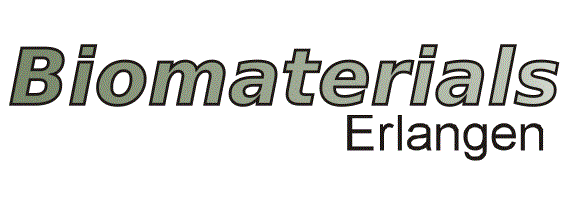Chiara Gunnella
Chiara Gunnella
Visiting student (Polytechnic of Milan, Italy)
Incorporation of mesoporous bioglass particles (MBGN) and biomolecules into an alginate based hydrogel for 3D (bio)printing approach
Supervisor (in Erlangen): Faina Bider, Prof. Aldo R. Boccaccini
3D printing and bioprinting techniques are showing a great potential in tissue engineering (TE) and regenerative medicine, as they allow to fabricate three-dimensional (3D) models of different human tissues by assembling cells and biomaterials in a precise organization [1]. Hydrogels based on alginate have been widely used for these purposes, owing to the biocompatibility of its natural structure and its ability to react rapidly with divalent cations, like Ca2+ ions, forming a gel. To overcome the drawback of pure alginate such as its slow degradation and to improve cell interaction, alginate can be oxidated to alginate dialdehyde (ADA). During oxidation, free aldehyde groups are creating which might covalently be crosslinked to free amino groups containing in proteins like gelatin (GEL) to confere the desired properties to the hydrogel [2]. Mesoporous bioactive glass nanoparticles (MBGN) have been widely used in the field of TE, especially for bone TE, as they provide bone bonding ability and osteogenesis, owing to their ionic dissolution products [3]. This project aims to incorporate MBGN into alginate based hydrogels to improve 3D printing properties for TE approaches.
[1] Kolan KCR, Semon JA, Bromet B, et al., 2019, Bioprinting with human stem cell-laden alginate-gelatin bioink and bioactive glass for tissue engineering. Int J Bioprint, 5(2.2): 204.
[2] Sarker, DB., et al., 2014, Fabrication of alginate–gelatin crosslinked hydrogel microcapsules and evaluation of the microstructure and physico-chemical properties. J. Mater. Chem. B, 2, 1470
[3] Aguilar-Rabiela, A.E.; et al., 2021, Integration of Mesoporous Bioactive Glass Nanoparticles and Curcumin into PHBV Microspheres as Biocompatible Composite for Drug Delivery Applications. Molecules 26: 3177.

